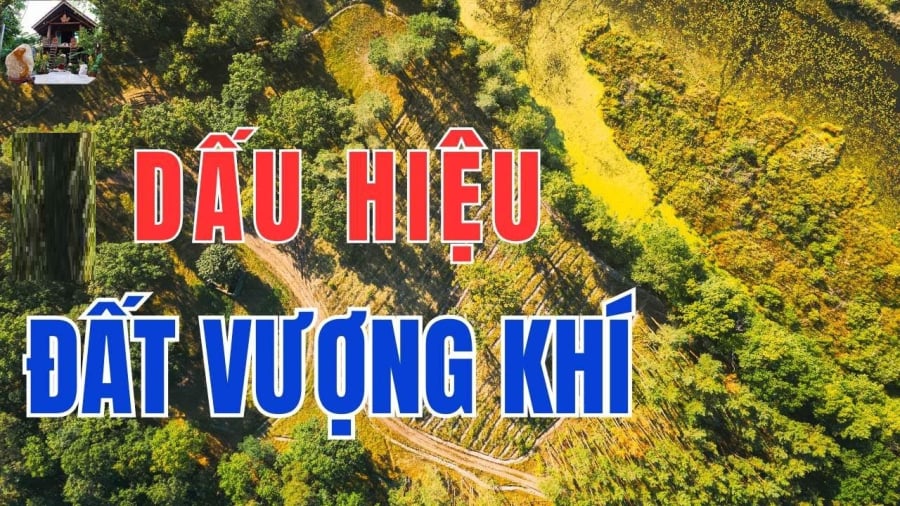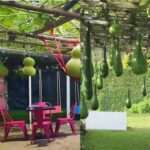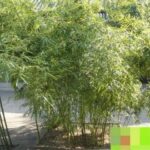Prosperous Land Forms in Feng Shui
In the book “Practical Feng Shui in Construction and Residential Architecture” compiled by Master Vu Duc Huynh, it is written: “Feng Shui is the art of balancing the living environment of the Orientals. In fact, feng shui is completely objective, lawful, consistent, and predictable, capable of changing destiny, and is the decisive factor in success or failure. Applying the feng shui perspective in choosing, building, designing, and arranging a house is essential. A house built in harmony with feng shui will create favorable conditions for positive energy to permeate the living space, bringing joy and vigor to the family members, thereby positively influencing their work and career.”

Prosperous Land Form That Brings Wealth: Building a House on It Will Bring Blessings for Three Generations
The following are four prosperous land forms, considered ideal for constructing homes, ensuring wealth and luck for the family across generations.
1. ‘Dragon Vein’ Land Form: Mountains and Hills, or Rivers and Lakes Creating a ‘Coiled Dragon and Seated Tiger’ Formation
The ‘Dragon Vein’ land form is situated in mountainous or hilly areas, or near rivers and lakes, where the water flow and surrounding terrain create a ‘coiled dragon and seated tiger’ formation. In feng shui, the ‘Dragon Vein’ is believed to be a place of concentrated qi, bringing abundant energy and vitality to the land. Building a house on this land form will attract positive energy from nature, leading to good fortune and prosperity for the household.
Benefits:
- Harmonious family with filial children.
- Smooth and progressively improving career and business.
- Abundant health and reduced illnesses.
2. ‘Water Convergence’ Land Form: Where Waters Gather, Bringing Continuous Wealth
According to feng shui, water represents wealth and prosperity. The ‘Water Convergence’ land form is where waters from different sources meet, such as areas near rivers or lakes, or those with a small pond within the premises. The gathering of water signifies a continuous flow of wealth into the house, ensuring a prosperous and abundant family life.
Benefits:
- Abundant wealth, free from financial worries.
- Peaceful family life enhanced by positive energy.
- Solid terrain, less prone to natural disasters.
3. ‘Back Support’ Land Form: Back Rests on Mountains, Face Towards Water
‘Back Support’ land form is characterized by a mountain at the back and a river or lake in front. This ideal feng shui land form symbolizes protection and support from behind, with smooth flow and wealth coming from the front. A house built on this land form is believed to receive strong support from nature, leading to advancements in the career and life of the residents.

Feng Shui Prosperous Land Form for Wealth
Benefits:
- Expanded career path and professional success.
- Stable family life and peaceful existence.
- Accumulated wealth and a happy life.
4. ‘Bright Hall Qi Gathering’ Land Form: Wider in the Front, Narrower in the Back, Inviting Wealth and Luck
The ‘Bright Hall Qi Gathering’ land form is wider in the front and gradually narrows towards the back. This land form symbolizes the gathering of qi, where the wind entering does not escape but is retained, similar to how wealth and luck are kept within the house. Building a house on this land form brings not only prosperity but also good fortune in life.
- Smooth flow of wealth and abundant luck.
- Protected family health, with reduced risks.
- Progressive career development and smooth undertakings.
Choosing the right land for construction involves not only physical factors but also the consideration of feng shui elements to ensure the house brings positive energy, wealth, and blessings to the family. These four land forms not only promise a prosperous life for the current generation but also preserve good fortune for the generations to come. Therefore, carefully selecting the right land form is the crucial first step towards building a happy and sustainable home.
“Why Do the Elders Say, ‘If You Don’t Plant Bamboo in Front, Plant Fewer Trees at the Back’? What Happens If You Do Plant Bamboo?”
The ancient wisdom advises, “If you don’t plant bamboo in front of your house, plant fewer trees behind it.” This cryptic proverb offers insight into the delicate balance between our built environment and nature. It is a reminder that while we may not always understand the intricacies of these ancient sayings, there is value in preserving and respecting the natural world that surrounds us.






































